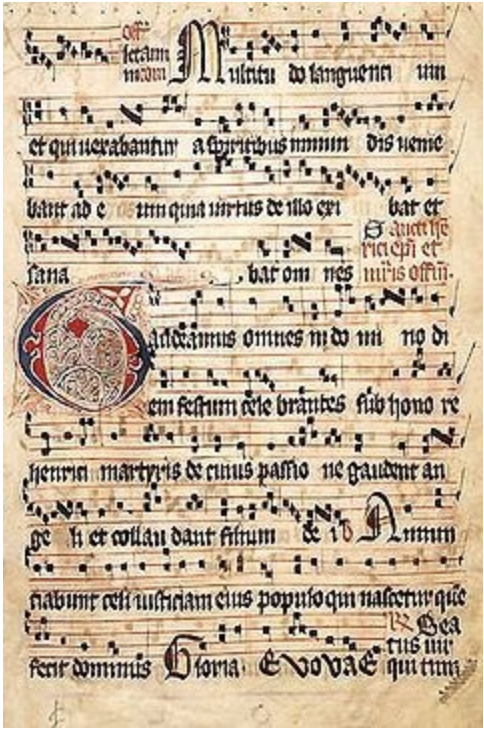I concetti di "materia", "forma" e "ordine" nel pensiero teorico musicale medievale e contemporaneo
DOI:
https://doi.org/10.13130/2035-7362/807Abstract
La dimensione teorica della musica occidentale, nella sua evoluzione storica, ha inevitabilmente fatto uso di concetti essenziali alla definizione di come il suono è musicalmente organizzato o organizzabile. Fra questi, risultano imprescindibili le nozioni di materia, forma e ordine, che implicano rispettivamente, nei pur diversi ambiti linguistici e contesti storico-filosofici di riferimento, ciò di cui è fatta la musica, ciò a cui la materia sonora tende, e come tale tensione è realizzata. Scopo di questo contributo è una valutazione d’insieme sulla valenza filosofica e l’uso di tali concetti nel pensiero musicale occidentale altomedievale e in quello del Novecento, che nonostante la distanza cronologica presentano convergenze significative. Nel Medioevo, un lungo processo di elaborazione teorico-pratica permise la matematizzazione dello spazio (e, più tardi, anche del tempo) musicale, attraverso l’adattamento di moduli melodici, trasmessi oralmente, alle strutture scalari desunte dalla teoria greco-boeziana. La forma e l’ordo musicali furono quindi riferiti ai criteri fisico-matematici atti a distinguere nella materia sonora, in sé disorganica e indefinita, ciò che è musicale da ciò che non lo è. Tale concezione sparisce con l’affermarsi del sistema tonale, ove il suono fisico è concepito come “pre-formato” e “pre-ordinato” nella gamma scalare e nei vincoli attrattivi “naturali” degli armonici. In conseguenza, i concetti di forma e ordine abbandonano il contesto acustico, andando a definire i criteri teorici della composizione artistica, in linea con l’idea filosofica del loro esprimere la coerenza logico-sintattica dell’“insieme organico” (la Formenlehre teorizzata da Widmann). Nell’ambito del pensiero musicale del Novecento, la crisi del sistema tonale e la messa a punto di nuove modalità e tecniche di produzione del suono hanno riorientato la valenza significante e l’uso di questi tre concetti, implicando il loro tornare a imporsi sugli elementi primari della fisica del suono, non solo l’altezza, ma soprattutto il timbro, il volume e la durata. Già Schönberg, nel 1911, affermava come “l’ordine che chiamiamo forma artistica” è “un necessario espediente” elaborato “a causa della nostra incapacità a comprendere l’indistinto e il non-ordinato”, che è la condizione propria della materia sonora.
In its historical development, the Western theory of music has inevitably made use of specific concepts to define how the sound is musically organized or organizable. Among these notions, those of matter, form and order signify – in spite of the different linguistic areas and the various historical and philosophical backgrounds – that from which music is made, that to which it tends and how such tendency is realized. This paper aims to evaluate the philosophical implications and the use of these three concepts in the musical theories of the high Middle Ages and of the twentieth century, since, in spite of their chronological distance, they present significant similarities. A long process of theoretical and practical adjustments of the melodic structures of liturgical chants to the scale-systems of the Greek and Boethian theory contributed to developing what would become a familiar notion throughout the Middle Ages: that musical intervals (and, later on, the musical rhythms) can be expressed in mathematical terms. According to this view, the words forma and ordo signify the mathematical measures that are applied to the “matter” of sound, which is considered as inorganic and indefinite in itself. This conception gradually disappears when the tonal system begins to emerge, since this new modality of composition implies that the physical sound is “pre-formed” and “pre-ordered” within the musical scale, according to the “natural” links of the harmonics. Consequently, the concepts of “form” and “order” do not refer any more to the context of sound generation, but are now used to define the theoretical criteria of the artistic composition, so to accomplish the new philosophic idea of their expressing the logical-syntactic coherence of the “organic-whole” (the Formenlehre, defined by Benedikt Widmann). In the early twentieth century, when the tonal system starts to be replaced by new methods of composition and when new modalities and techniques of sound production emerge, those three concepts are used, again, to express the basic elements of the physics of sound: not only its height, but also its timbre, volume, and duration. In 1911, Schönberg argued that the order that we call “artistic form” is a necessary device, elaborated “because of our incapacity to comprehend the indistinct and unordered thing”, that is the own condition of the matter of sound.
Downloads
Published
Issue
Section
License
Authors who publish in this journal accept the following conditions:
a. Authors retain the rights to their work and assign to the journal the right of first publication of the work, simultaneously licensed under a Creative Commons - Attribution License that allows others to share the work indicating intellectual authorship and first publication in this journal.
b. Authors may enter into other non-exclusive licensing agreements for distribution of the published version of the work (e.g., deposit it in an institutional repository or publish it in a monograph), provided they indicate that the first publication was in this journal.
c. Authors can disseminate their work online (e.g., in institutional repositories or on their own website) before and during the submission process, as it can lead to productive exchanges and increase citations of the published work (See The Effect of Open Access).





